Karl Marx: o patriarca da esquerda judia ?
Karl Marx: o patriarca da esquerda judia ?
O livro de Kevin MacDonald intitulado The Culture of Critique (CofC) deveria ser revisado para focalizar Karl Marx, o fundador do primeiro movimento intelectual e político dos judeus de âmbito mundial? Sendo o criador judeu do socialismo “científico”, ele deu início à crítica radical da sociedade europeia que se estende ao século XXI. Embora o CofC aborde especificamente os movimentos intelectuais e políticos judaicos do século XX, ele certamente poderia ter ampliada sua compreensão da esquerda judaica, se Marx pudesse ser incluído no seu quadro teórico como o fundador dos movimentos intelectuais e políticos que tanto orientaram a esquerda judia no século XX.
A primeira questão a ser levantada é se Marx se reconhecia como dirigente judeu de um movimento intelectual e político de judeus. O CofC de Kevin MacDonald indica os passos a seguir para a solução do problema. Examinemos detidamente as indicações de Kevin MacDonald.
A metodologia de Kevin MacDonald é bastante objetiva. O primeiro passo consiste em “identificar movimentos influentes sob direção judaica, quaisquer sejam, não importando se todos ou a maioria dos judeus participassem deles”. O segundo passo consiste em “determinar se os participantes judeus se assumiam como judeus e se, por tal participação, buscassem atender a interesses judeus”. [i] Depois, então, discutiremos a influência e o impacto desses movimentos na Europa e nos Estados Unidos.
Em vista desses critérios de Kevin MacDonald, acreditamos em que o socialismo científico de Marx atenda aos dois quesitos.
Em primeiro lugar, Marx teve participação direta na criação das principais organizações de esquerda no século XIX. A maioria das primeiras organizações socialistas sofreram influência direta de Marx, quais sejam: a Liga Comunista, cofundada por Marx e Engels em 1847; o Partido Social-Democrático da Alemanha, fundado em 1863; o Partido Socialista Trabalhista da América, fundado em 1876; o Partido dos Trabalhadores Franceses, cofundado pelo genro de Marx, Paul Lafargue, em 1880; e a Federação Social-Democrática Britânica, fundada em 1881. A maioria dessas organizações moldaria a vida política da Europa e dos Estados Unidos no século XX.
Aquele que foi o sabatigói [N.T.: no original: Shabbos Goy] de Marx por longo tempo, Engels, reconheceu a preponderância dos judeus nos movimentos esquerdistas do século XIX:
Ademais, temos para com os judeus uma dívida de gratidão. Sem falar de Heine e Böme, Marx era de pura origem judia; Lassalle era judeu. Muitos entre os melhores da nossa gente são judeus. Meu amigo Victor Adler, que agora está cumprindo pena numa prisão em Viena por sua devoção à causa do proletariado; Eduard Bernstein, o editor da publicação londrina Sozialdemokrat, Paul Singer, um dos melhores homens no Reichstag —essas pessoas deixam-me orgulhoso por sua amizade, e todos eles são judeus! Eu mesmo fui considerado judeu pelo [semanário conservador] Gartenlaube. Na verdade, se eu tivesse de escolher, preferiria ser um judeu a ser um “Herr von” ! [ii]
Em 1911, o sociólogo Robert Michels chamou atenção para a “abundância de judeus na direção dos partidos socialistas e revolucionários”:
Sobretudo na Alemanha, a influência dos judeus tem sido evidente no movimento dos trabalhadores. Os dois primeiros grandes capitães, Ferdinand Lassalle e Karl Marx, eram judeus, bem assim como o contemporâneo deles Moses Hess. O primeiro eminente político da velha escola a abraçar o socialismo, Johann Jacoby, era judeu. Também Karl Höchberg, um idealista, seu pai era rico comerciante de Francoforte, fundador da primeira revista socialista publicada em língua alemã. Paul Singer, que quase sempre presidia os congressos socialistas alemães, era judeu. Entre os 81 deputados socialistas mandados ao Reichstag na penúltima eleição geral, havia nove judeus. Este número é extremamente alto, comparado com a percentagem de judeus na população da Alemanha, com o total de trabalhadores judeus e com o número de judeus no Partido Socialista. [iii]
Em segundo lugar, longe de ser um etnomasoquista antissemita, Karl Marx identificava-se fortemente como judeu e estava muito envolvido com a comunidade judaica:
Com os judeus e a judaicidade, Marx sempre manteve laços positivos. Entre seus amigos mais próximos estavam os judeus Heinrich Heine and Ludwig Kugelmann; por certo tempo privou com Moses Hess e ajudou o ex-comunista de Colônia Abraham Jacoby a emigrar para os Estados Unidos (onde ele se tornou um médico influente). [iv]
Fato indicando forte identificação judaica é que, quando Jacoby militava pela revolução na Europa, sua agenda era a “emancipação” judaica, — a naturalização e eleitoralização dos judeus. Como no caso de Marx, seus associados mais próximos também tinham forte senso de identidade grupal judaica. Eles compartilhavam objetivos, crenças e compromissos em pró da emancipação dos judeus.
A persistente crítica de Marx contra as sociedades europeias resultava dos sentimentos de sua marginalização. Ele era etnicamente judeu, fora criado numa família liberal judia conforme os valores do Iluminismo. Seu pai abraçou o universalismo iluminista por causa da marginalidade dos judeus na sociedade europeia. Em consequência de sua marginalidade social, Marx tornou-se hostil à cultura e aos valores europeus. Reagindo a isso, ele construiu uma identidade social judia positiva, retratando o comportamento judeu balizado pelo ganho financeiro como motivo de orgulho étnico, não como conduta a ser demonizada. Conforme Marx, a emancipação dos judeus não implicaria a dissolução de sua identidade étnica, antes seria resultado da futura condição proletário-comunista ou, mais precisamente, secular, das sociedades europeias, com plena aceitação dos judeus. Ele chegou a acreditar que o judaísmo secular cumpriria papel positivo nas sociedades cristãs europeias. O triunfo mundial do comunismo corresponderia à vitória mundial do judaísmo secular, deixando livres os judeus para a defesa de seus interesses coletivos em sociedades formalmente europeias ainda, mas judaizadas. Nesse particular, Marx não era diferente dos profetas hebreus — que pregavam o domínio israelita do mundo sob a realeza messiânica, a não ser pelo fato de que Marx disfarçava seu particularismo étnico judeu sob a roupagem universalista do Iluminismo liberal.
Em A questão judaica, ele não apenas clamou pela emancipação judaica, como também desafiou o “antissemitismo”. Ele faria a mesma coisa novamente em A sagrada família, publicado em 1844. Esses ensaios foram escritos para refutar Bruno Bauer, para quem a raça judia era “horrorosa” e não teria contribuído com nada para a “construção da modernidade”. [v] Marx acreditava que o preconceito antissemita europeu poderia ser eliminado pela transformação da Europa nas utopias proletário-comunistas, por cuja tolerância poderia o judaísmo continuar a existir. Aparentemente Marx não se iludia ao combater pela emancipação dos judeus, pois ele tinha plena consciência de ser judeu e queria proteger os judeus da perseguição branca por meio do universalismo, em detrimento das maiorias europeias na própria Europa.
Os mais importantes discípulos de Marx ou eram judeus ou eram descendentes de judeus, a exemplo de Adler, Bauer, Bernstein, Luxemburg, Lenin, Trotsky e os membros da Escola de Francforte. Apesar disso, os marxistas judeus aparentemente não ligavam importância à identidade judia de seus membros, pretendendo apresentar a luta pela emancipação judaica como parte da luta contra a sociedade burguesa. Como observou Kevin MacDonald no CofC, os ativistas étnicos judeus escamoteavam sua etnicidade judaica, recrutando não judeus para servir de manequins, que vestiam de linda roupagem para disfarçar o que na realidade era um movimento judeu. Dissimulando sua judaicidade, os dirigentes marxistas puderam promover os interesses judaicos quase sem nenhuma oposição, o que lhes permitiu recrutar mais inocentes úteis entre os góis. Embora o socialismo moderno deva suas origens a um judeu e tenha sido dominado pelos judeus, o movimento atraiu muitos góis, alguns deles se destacaram, como Bebel e Liebknecht. Aliás, quando foi da morte de Marx em 1883, seu maior porta-voz era Engels, um sabatigói.
Marx dizia-se amigo do proletariado, mas suas relações com a comunidade judaica eram estreitas. Como todos os ativistas étnicos judeus, Marx tinha a obsessão de combater o antissemitismo onde quer que se lhe deparasse, mas para não alarmar os góis, esse combate apresentava-se de mistura com a luta contra a sociedade burguesa. O artifício prestava-se a propósito vital, já que assim Marx acobertava sua atitude adversa à sociedade europeia e ainda atraía os não judeus para a nova fé secular judaica — não judeus que também iriam ajudá-lo na luta contra o antissemitismo, como se apenas militassem pela revolução proletária mundial. Enquanto ínfima minoria nas sociedades europeias, os judeus sempre se serviram de não judeus para a consecução de seus objetivos, assim fizeram os marxistas que se valeram do proletariado, assim fazem os neoconservadores que se valem dos conservadores do estabilismo para favorecer Israel.
A análise e a apologética marxistas sempre tiveram por base o “cepticismo e esoterismo científicos”.[vi] Como indica Kevin MacDonald no seu CofC, os ativistas étnicos judeus do século XX comumente lançavam mão dessas táticas mistificatórias. O capitalismo deve atender a requisitos de alto padrão para ser considerado um sistema econômico viável, apesar de sua longa história de sucesso na geração de crescimento econômico, enquanto o comunismo é sempre considerado profícuo, apesar de seus embaraçosos precedentes de estado policial autoritário, pauperização massiva, totalitarismo extremo e catástrofes ambientais. Temos aí dois pesos e duas medidas quanto ao ônus da prova que servem para apresentar o marxismo como um sistema de crenças viável. De igual modo, os apoiantes judeus de Marx argumentam, maliciosamente, que “O socialismo não fracassou, o que fracassou foi o estalinismo, isto é, a ditadura burocrática do partido”. [vii]
A análise econômica de Marx era tão hegelianizante que seus críticos e adeptos não lhe puderam compreender a exata significação. Livros dele como A ideologia alemã e O capital geram ainda controvertidas interpretações. Ele vazava seu discurso em linguagem científica para cobrir suas profecias como o verniz da credibilidade. Por exemplo, o socialismo de Marx era chamado de socialismo “científico”, para que se distinguisse de suas variantes “utópicas”. O fato de apresentar sua versão do socialismo como “científica” indica que o esoterismo da linguagem de Marx era proposital, no que foi imitado pelos epígonos. Na realidade, o socialismo marxiano consistia numa espécie de culto secular da religião judia, cujos princípios dogmáticos não permitiam revisão, mesmo quando confrontados com irrefutáveis evidências em contrário. Até os nossos dias, nenhuma das leis marxistas do desenvolvimento capitalista tornou possível experiências empíricas de falsificação, nem qualquer de suas profecias foi confirmada.
É interessante notar que Franz Boas não foi o primeiro intelectual judeu a submeter a aplicação social do darwinismo a virulenta crítica intelectual; essa honraria cabe a Marx e a seu sabatigói pessoal, Engels. A princípio, eles eram adeptos entusiastas da obra de Darwin A origem das espécies. Acreditavam que a seleção natural corroborava a análise dialético-materialista do desenvolvimento histórico. Entretanto, Marx e Engels chegaram à conclusão de que a teoria de Darwin era “metafisicamente inaceitável”:
Dado que Darwin via a luta na natureza, em grande parte, como luta entre indivíduos, sua teoria pareceu-lhes solapar a própria possibilidade da solidariedade de classe e a eliminação final do conflito humano. […] Na opinião de Marx, a deficiência mais grave da teoria de Darwin residia na ênfase posta sobre o caráter indeterminado e aleatório das mutações, implicando que no mundo para além do reino animal o progresso fosse “puramente acidental e não necessário”, ao contrário do que desejava Marx e exigia a sua teoria (Marx apud Feuer, 1975, p. 121). O Darwinismo ameaçou a fé de Marx e Engels num processo histórico mais propício. [viii]
Em virtude de a biologia darwiniana haver limitado o poder explanatório de sua dialética histórica, Marx and Engels recorreram a causalidades ambientais e subjetivísticas:
Em razão de que outras teorias da evolução, como as de Trémaux e Lamarck, tivessem enfatizado como causas das mutações adaptativas nas espécies ou nas raças a ação direta do meio ambiente ou a resposta automática às necessidades do organismo, tais teorias pareceram mais atraentes para Marx e Engels (como também para Stálin e Lysenko), por darem sanção “científica” para a mundivisão deles. [ix]
A exemplo dos ativistas étnicos judeus que Kevin MacDonald citou no CofC — Boas, Lewontin, Gould etc. — Marx e Engels combateram a aplicação social do darwinismo, porque comprometia sua capacidade de impor a perspectiva ambientalista às sociedades europeias, a partir da qual projetavam a construção de nova raça humana pela manipulação do ambiente conforme as ideias marxistas. Na consecução desse objetivo, os comunistas mataram milhões de dissidentes, sem nenhum escrúpulo, abrindo caminho para o novo homem que fosse criado pelo sistema educacional comunista.
Marx era conhecido por suas tendências ditatoriais, característica que ele compartia com os ativistas étnicos judeus do CofC. No seu pugnaz empenho para conquistar o poder, os judeus foram acusados de autoritarismo pelos seus oponentes. Em 1850, Eduard Müller-Tellering publicou Vorgeschmack in die kuenftige deutsche Diktatur von Marx und Engels, ou A foretaste of the future German dictatorship of Marx and Engels [A pré-estreia da futura ditadura alemã de Marx e Engels], atacando Marx por sua mania de dominação. Os dois tiveram um bate-boca, que Müller-Tellering atribuiu à sede de vingança do “futuro ditador alemão” Karl Marx, motivada pelo fato de ele, Müller-Tellering, haver publicado artigo contra os judeus no próprio jornal de Marx, o Neue Rheinische Zeitung [Nova Gazeta Renana]. Segundo Müller-Tellering, o implacável e vingativo comportamento de Marx resultava da natureza dos judeus, da perversidade deles.
A personalidade autoritária de Marx alienou dele o anarquista Mikhail Bakunin (1814–1876), que escreveu o seguinte:
Todo esse mundo judeu constitui uma só seita exploradora, um tipo de povo-vampiro, um parasito coletivo, voraz, auto-organizado não apenas por sobre as fronteiras dos Estados, mas também por sobre as diferenças de opinião política — esse mundo está, pelo menos em grande parte, à disposição de Marx e dos Rothschilds. Eu sei que os Rothschilds, reacionários como são e continuarão sendo, admiram profundamente os predicados do comunista Marx; e por sua vez o comunista Marx sente-se atraído, por interesse instintivo e respeitosa admiração, pelo gênio financeiro dos Rothschilds. A solidariedade judaica, aquela poderosa solidariedade que se manteve ao longo dos séculos, ligou Marx aos Rothschilds. [x]
Percebe-se aí que Bakunin tinha consciência do grande número de seguidores judeus de Marx — ele sabia que o mundo judaico repartia-se entre Marx e Rothschild. Bakunin rejeitou a ditadura do proletariado de Marx, porque implicava a centralização do poder do Estado, o que levaria ao seu controle por pequena elite. Marx e Bakunin andavam sempre às turras. Bakunin lutava por uma “confederação descentralizada de comunas autônomas”, sendo atacado por Marx, para quem o melhor seria a ditadura do proletariado. Depois do embate entre os comunistas de Marx e os anarquistas de Bakunin, no Congresso de Haia de 1872, Bakunin acabou sendo expulso da Primeira Internacional, por determinação pessoal de Marx.
Assim como os ativistas judeus citados no CofC, Marx combatia na guerra étnica contra as sociedades europeias. O seu socialismo científico ameaçava solapar a moral e as fundações intelectuais da Europa, de sorte que se transformasse numa sociedade secular para suportar indefinidamente a continuação da existência do judaísmo. Por exemplo, em O capital, a sua obra magna, Marx tentou desvelar o funcionamento dos mecanismos internos do modo de produção capitalista na Europa Ocidental, explicando por que ele entraria em colapso sob o peso de suas próprias contradições, preparando o caminho para a revolução proletária. A ditadura do proletariado era visionada como ferramenta de forte dominação, centralizada e autoritária. Quando ela foi imposta aos russos pela elite hostil que assumiu o poder a partir de 1917, teria como consequência a morte de muitos milhões e a opressão política de todos, sendo plausível supor que Marx teria ficado muito feliz se houvesse sido capaz de impor semelhante regime sobre todos os europeus. Embora a defesa que fazem os judeus do universalismo nas sociedades brancas signifique a autodestruição cultural e racial dos próprios brancos, ela enseja as condições ideais para a prosperidade judaica, ao maximizar o controle judaico sobre a população europeia inclusiva e ao minimizar o temor judaico da perseguição antissemítica.
Foi Marx quem assentou as bases ideológicas da principal corrente do ativismo étnico judeu no século XX. No quadro teórico do CofC, a importância de Marx é depreendida de sua condição de fundador judeu de um movimento intelectual e político judeu em meado do século XIX, cuja influência estende-se até o presente. Por exemplo, o mais influente movimento intelectual judeu contemporâneo, a Escola de Francforte, era seita marxista ortodoxa a princípio, mas revisou o marxismo, desviando-o da luta de classes para uma teoria enfatizando o etnocentrismo branco como o problema fundamental e inaugurando o que agora é frequentemente denominado de marxismo cultural.
A conclusão é que o engajamento judeu na esquerda remonta a meado do século XIX e continua exercendo influência no mundo contemporâneo, mostrando-se diante dos europeus como força opositora.
BIBLIOGRAFIA
BLUMENBERG, Werner. Eduard Von Müller-Tellering: Verfasser Des Ersten Antisemitischen Pamphlets Gegen Marx. Bulletin of the International Institute of Social History, v. 6, n. 3, 1951, p. 178-197. Disponível em: <www.jstor.org/stable/44629595>.
COFNAS, Nathan. Judaism as a Group Evolutionary Strategy. Human Nature, v. 29, n. 2, 10 MAR 2018, p. 134-156, 10.1007/s12110-018-9310-x. Acesso em: 13 DEZ 2019.
DRAPER, Hal. State and Bureaucracy. New York; London: Monthly Review Press, 1977. (Karl Marx’s theory of revolution, v. 1).
________. Critique of other socialisms. New York; London: Monthly Review Press, 1990. (Karl Marx’s theory of revolution, v. 4).
FINE, Robert, PHILIP, Spencer. Antisemitism and the Left : On the Return of the Jewish Question. Manchester, UK, Manchester University Press, 2018. Disponível em: <www.manchesteropenhive.com/view/9781526104960/9781526104960.00007.xml>. Acesso em: 13 DEZ 2019.
KAYE, Howard. Social meaning of modern biology: from social darwinism to sociobiology. Routledge, 2017.
MACDONALD, Kevin. The culture of critique: an evolutionary analysis of jewish involvement in twentieth-century intellectual and political movements. Westport: Praeger, 1998.
MARX, Karl. On The Jewish Question by Karl Marx. Marxists.org, 2019. Disponível em: <www.marxists.org/archive/marx/works/1844/jewish-question/>. Acesso em: 13 DEZ 2019.
________ The Holy Family by Marx and Engels. Marxists.org, 2019. Disponível em: www.marxists.org/archive/marx/works/1845/holy-family/ch04.htm. Acesso em: 13 DEZ 2019.
________. Early Texts. Translated and Edited by David McLellan. Oxford: Basil Blackwell, 1971.
MARX, Karl, ENGELS, Friedrich. Marx and Engels, 1860-64. New York: International Publishers, 1985. (Collected works, v. 41).
MICHEL, Robert. Political Parties : a sociological study of the oligarchical tendencies of modern democracy. New York, Free Press ; London, 1962.
SEIGEL, Jerrold E. Marx’s fate : the shape of a life. University Park, Pa., Pennsylvania State University Press, 1993.
WARTENBERG, Thomas E. “Species-Being” and “Human Nature” in Marx. Human Studies, v. 5, n. 1, Dec. 1982, p. 77-95, 10.1007/bf02127669. Acesso em: 26 NOV 2019.
WISTRICH, Robert S. Karl Marx and the Jewish Question Soviet Jewish Affairs, v. 4, n. 1, jan. 1974, p. 53-60, 10.1080/13501677408577180. Acesso em: 21 NOV 2019.
REFERÊNCIAS
[i] MACDONALD, Kevin. Culture of critique. p. 11-2.
[ii] ENGELS, Frederick. “On anti-semitism”. Arbeiter-Zeitung, n. 19, 9 MAIO 1890. Disponível em: https://www.marxists.org/archive/marx/works/1890/04/19.htm
[iii] MICHELS, Robert. Political Parties. p. 246.
[iv] SEIGEL, Jerrold. Marx’s Fate. p.114.
[v] MARX, Karl; ENGELS, Frederick. “The Holy Family.” Marxists.org, 2019. Disponível em: www.marxists.org/archive/marx/works/1845/holy-family/ch04.htm.
[vi] MACDONALD, Kevin. Culture of Critique. p. 122.
[vii] MANDEL, Ernest. The Roots of the Present Crisis in the Soviet Economy (1991). Disponível em: <https://www.marxists.org/archive/mandel/1991/xx/sovecon.html>.
[viii] KAYE, Howard. Social Meaning of Modern Biology. p. 25.
[ix] KAYE, loc. cit. .
[x] DRAPER, Hal. Karl Marx’s Theory of Revolution, v. 4, p. 596.
Fonte: The Occidental Observer. Autor: Ferdinand Bardamu. Título original: Karl Marx: founding father of the jewish left ? Data de publicação: 4 de janeiro de 2020. Versão brasilesa: Chauke Stephan Filho.

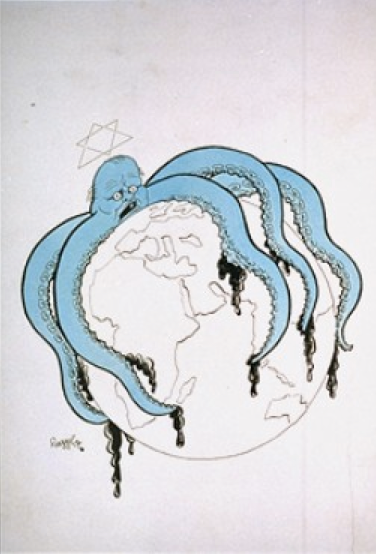

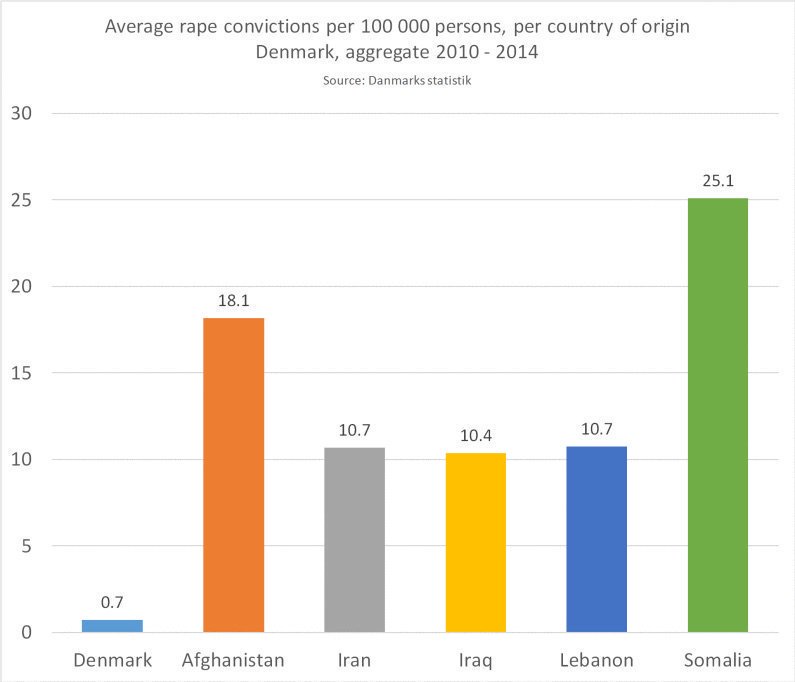



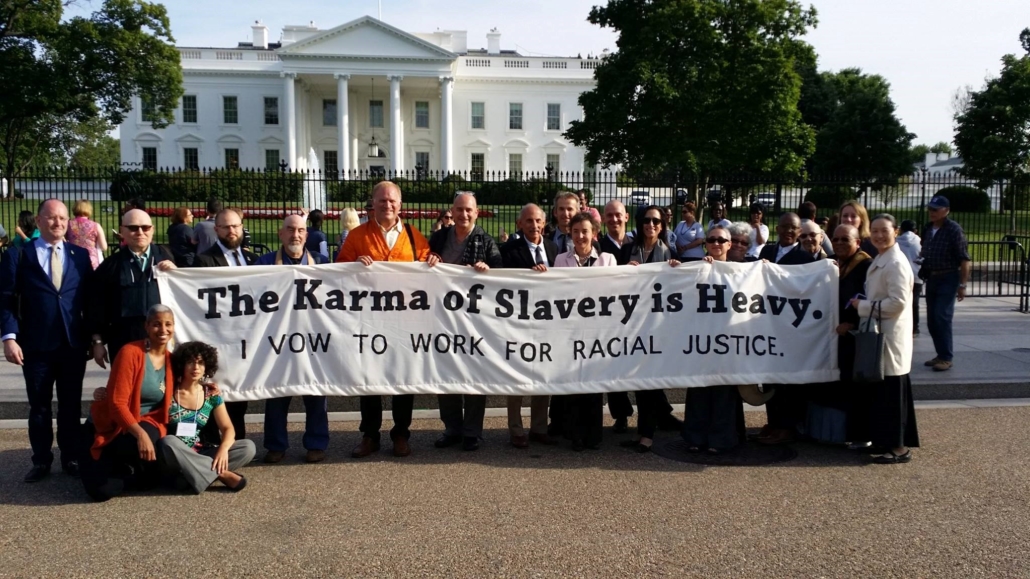



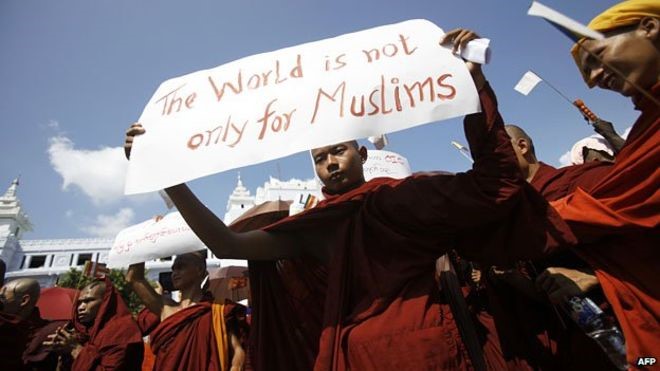
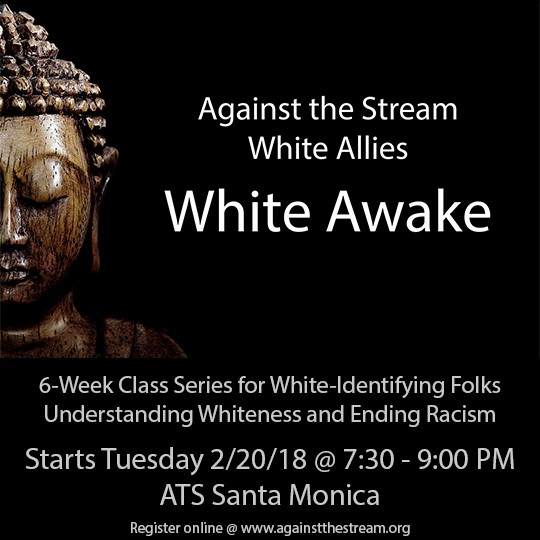
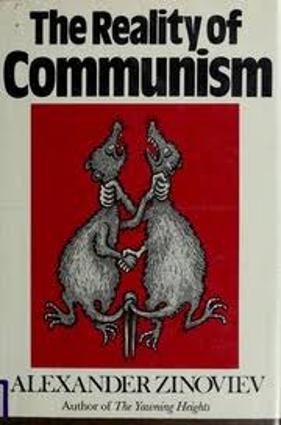 In an effort to destroy the Christian tradition, communists had to remove the Church and the clergy. During the early communist revolutionary post-World War II fervor, religious leaders were often burned alive, or buried alive, or crucified alive. The Bolsheviks, in 1918, buried alive the Russian Christian Orthodox
In an effort to destroy the Christian tradition, communists had to remove the Church and the clergy. During the early communist revolutionary post-World War II fervor, religious leaders were often burned alive, or buried alive, or crucified alive. The Bolsheviks, in 1918, buried alive the Russian Christian Orthodox 


